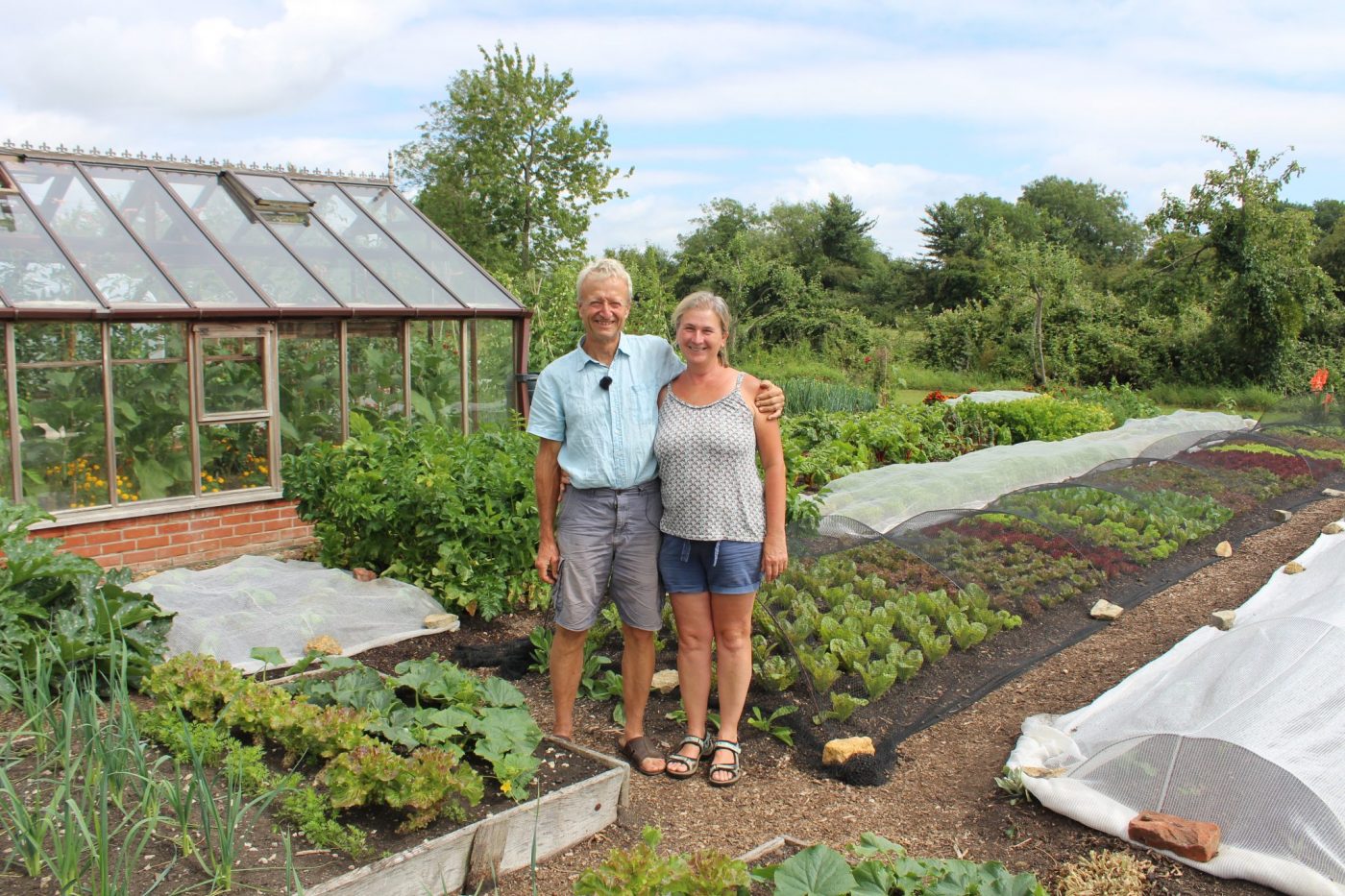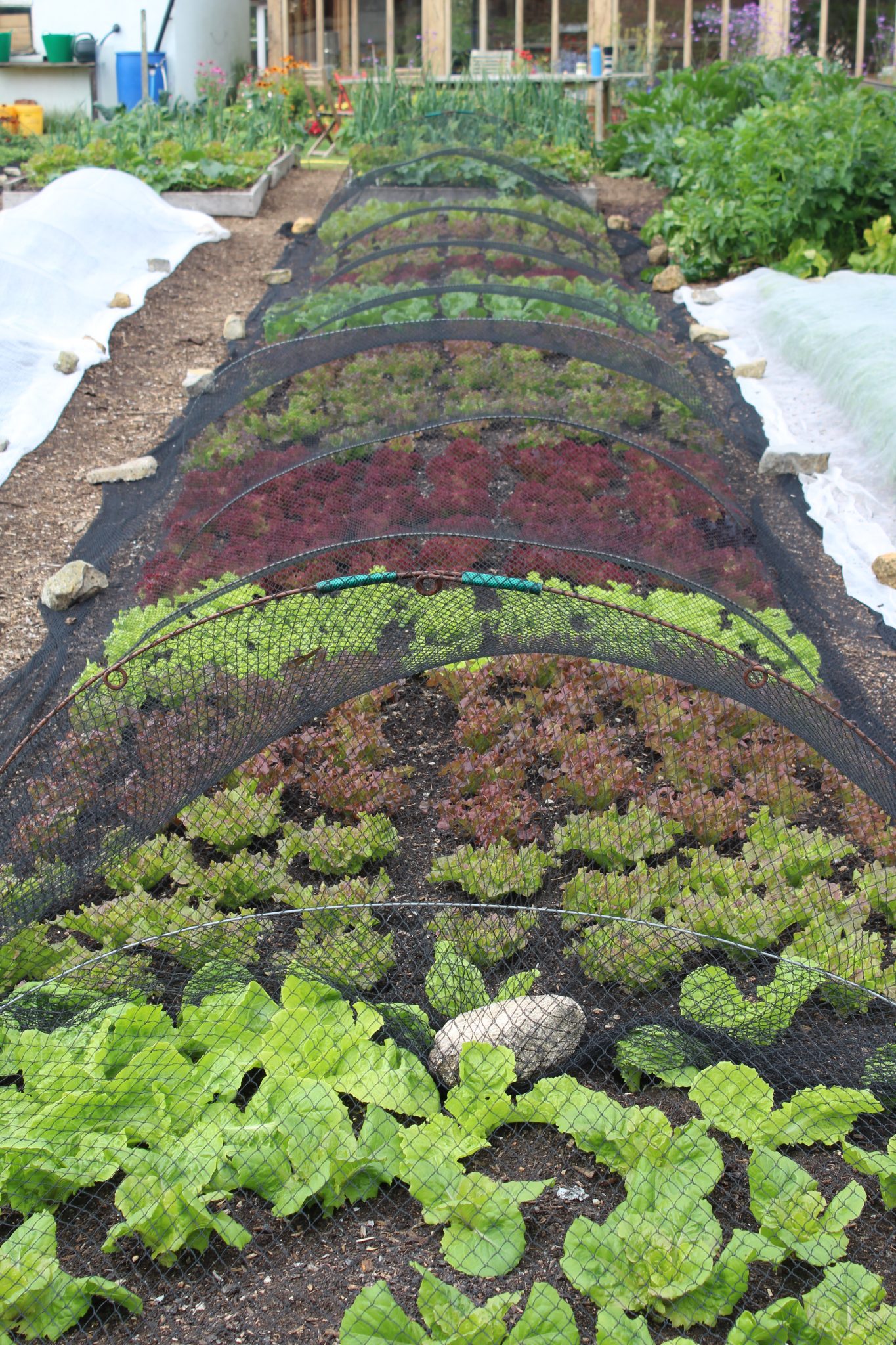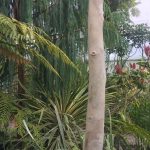On our recent trip to Somerset Chris and I caught up with Charles Dowding and Stephanie Hafferty at the private mecca of no dig gardening, Homeacres. Stephanie being generous with her time and advice showing us around while Charles was at work on his latest YouTube video.

Some garden visits are a pilgrimage, no one can make this feeling happen and you never expect it until after the event. It’s the result of someone who has devoted their life to gardening, transforming their plot into something that captures the imagination of other gardeners. Of course, our journey to no-dig HQ was enhanced by seeing “Grown by Charles Dowding” above vegetables in a local shop and ordering a “Charles Dowding side salad” the night before in a nearby restaurant. Charles’ reputation precedes him, especially from heartwarmingly proud local businesses. Oh, and I can vouch that Charles’ lettuce is the best lettuce I’ve ever eaten. Fact.
Every keen vegetable gardener will know of Charles’ trials, patiently shared on YouTube, Instagram, and charlesdowding.co.uk proving that the traditional act of digging in organic matter is not only pointless but often detrimental, instead adding as a mulch. Beyond no dig, Charles and Stephanie of course have a wealth of knowledge from over thirty years of growing. I owe Charles a particular debt of gratitude not least for the service he does the world through sharing food growing advice but because, having never dug over a plot in my thirty years of gardening out of pure laziness – I always thought, if it works in nature it’ll work for me – he has magically turned me from gardening couch potato to no dig convert.
Here are ten of my key takeaways from the afternoon…
1) You don’t need a big space for a big yield

For me, it was reassuring to see how modest a size Homeacres is. The main area is actually almost exactly the same size as my allotment, the entire plot perhaps only two allotments in size. Yet it churns out edibles year round by the literal truck load. Homeacres is a lesson in the art of the efficient kitchen garden and proves that the rest of us can live the good life with similarly sized spaces.
2) Weeding is manageable

I was surprised when Stephanie pointed out the long wild strip only meters from Charles’ main growing area. Filled with weeds and wildflowers and left for wildlife to enjoy. These are exactly the same conditions many of us face in gardens and on allotments when a plot becomes abandoned and overgrown. Charles faces the same conditions as all of us then, he simply keeps on top of the weeds with hoeing, hand weeding and weed suppressing mulches. For a video he had left a small patch of field bindweed; it’s there in his soil too. I don’t know why I found this so reassuring but it was. Perhaps because I struggle to keep on top of my weeds, only visiting my plot each week, yet here was proof that keeping back the tide is possible.
3) No raised beds

One of the things I love about Charles’ plot is that he doesn’t use raised beds, I too have personally found them pointless. Except of course if you have physical challenges to get to the ground, then tall raised beds are of course useful for lifting the soil level to waist height. Stephanie pointed out that the composted bark paths are only a very fine dusting, not deep, keeping them easy to hoe. My allotment beds are – I’m reassured – very similar but I struggle to keep weeds off the paths. Inspired, I’m going to make adjustments for a second attempt in winter.
4) Keeping edges trim and tidy
It was a joy – sorry Charles! – to see couch grass creeping onto his main growing area from the surrounding cut grass. Not because I want to see his plot overrun but because it gave me hope! Very few of my beds have actual edging and my allotment site’s grass paths are almost completely couch grass. Charles explained that this really isn’t a problem, he simply edges using a half moon edger and then removes the grass periodically, keeping it at bay.
5) Polytunnel dreams

Stephanie let me sneak into the new polytunnel, filled with the most wonderful tomato crops and more. I often recommend polytunnels because I see how useful they are for warm weather crops and for extending growing into colder months. One day I hope to have one but for now, let Charles’ demonstrate why they are so valuable. At homeacres Charles doesn’t always feed his tomatoes, this year he is letting the soil and added mulch do the work. I liked his approach: “I may have a larger crop with feeding but this is more than enough,” he said.
6) Lessons in lettuce

The lettuce we ate in the restaurant had little red spotty variegations on it, which were really beautiful. You can imagine my excitement then at spotting that same lettuce at Homeacres (growing for real!) being allowed to go to seed for the next crop. On a personal level, that was fun, a little bit of full circle. On our tour, Stephanie and one of the team talked us through the lettuce growing and interestingly Charles uses a lot of cut and come again types for repeat harvesting. He also, I noted, spaces them further apart than I do. Stephanie also explained how Charles grows some spares in plugs incase there’s a problem with any plant, then filling the gap. Some of this I’d seen in his photos but it was only seeing it in person that everything fell into place and made sense. I’ll be attempting to improve my lettuce growing in future off the back of this.
7) Barriers of netting and fleece

OK, so there are lots of things we can learn from the above photo. Here you can see the many lettuce types and the spacing but the most interesting for me are the barriers. The netting is mainly to stop pigeons and rabbits – Stephanie said one was hiding beneath compost (Stephanie and I were pro-rabbit for its daring!) While the horticultural fleece is to stop insect pests and for shelter in colder moments. But the thing I love the most are the rocks. Pinning down the barriers, they’re easy to lift for access to the plants. None of that fiddling with pins or burying the edges, these are made for speedy weeding and harvesting.
8) Keep experimenting

The above image I could have used for a point on amazing asparagus but I thought I would just use it to say that throughout the site, Charles is trialling lots of different crops and methods of growing. I like this playful way of gardening with a purpose, to keep pushing knowledge and efficiency forward. I also wanted to share this photo because Stepanie pointed out the neighbouring house, which you can see, has the best view of Homeacres.
9) Intercropping
Stephanie showed us a row of Brussel sprouts intercropped with carrots. Intercropping is something I was taught at Royal Botanic Garden Edinburgh but not something I regularly put into practice, I think I find it all quite complicated juggling with crop rotation (which I know Charles has views on from a time I interviewed him for The Telegraph). Again, seeing it in person and having Stephanie explain to me how she does it has spurred me to try it again.
10) Aubergines
When we popped into the greenhouse Charles pointed out how he grows aubergines by pinching them into double cordons. I don’t have a greenhouse so only grow the bush outdoor types, but one day I hope to be able to give this method a try.
11) Aminopyralid

Until this year I had only heard of aminopyralid based weed killers as part of my RHS Level 2 and 3 courses – though I still hadn’t actually been able to remember the name by heart! Over the last couple of months Charles has educated me after many reports this year of its presence in composts and manures affecting gardeners around the country, and indeed the world. This resulted in a news article I wrote for Telegraph Gardening, including Charles’ comments. Above you can see an affected tomato with its telltale twisted growing points. Key, if you’re sure you’ve bought growing media with weedkiller in, is to report it to the Government so they know exactly how prevalent the problem is and investigate.
We really enjoyed visiting Homeacres and spending time with Stephanie and Charles, immersed in their veg growing no-dig world. Being around expert gardeners excites me. People who’ve gardened all their lives will always teach you something new because people at the top of their game literally spill insights with every word they say. It was the most information dense afternoon and I’ve been reflecting on everything since, I know my own veg and fruit growing will improve as a result. And beyond that, it was great spending time with two extremely nice people.
Thank you Stephanie for a very funny tour, the enlightenment of “the well” and hopefully see you down the pub again Charles! 🙂
Jack and Chris




